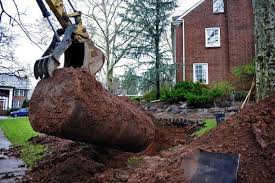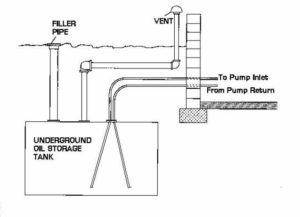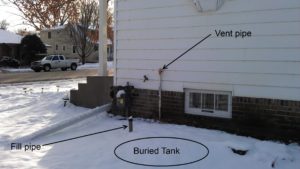Buying a new home? What you need to know about Underground Storage Tanks (USTs).

Purchasing a new home can be an overwhelming and costly process. Ask any home buyer and they will tell you there is so much proverbial “Red Tape” that it can be a daunting task just to make sure you don’t fall victim to overlooking something that will cost you later. One avoidable issue when purchasing a home is making sure that it is clear of Underground Storage Tanks (USTs).
1. What is an Underground Storage Tank (UST)?

The Environmental protection agency (EPA) classifies an underground storage tank system (UST) as a tank and any underground piping connected to the tank that has at least 10 percent of its combined volume underground. The federal UST regulations apply only to UST systems storing either petroleum or certain hazardous substances.
Underground tanks have been used for decades for residential heating oil storage. Residential heating oil tanks were common throughout the 1950’s, 1960’s, and early 1970’s as a means of heating and some property owners may be unaware that these tanks are still present on their property even though their buildings have long been converted to natural gas heating. In some cases, following conversion to natural gas, the heating oil from these tanks may not have been removed and as the tanks started to corrode, any residual fuel in the UST could leak to the environment.
Update: New Jersey Oil Tank Laws are changing in 2018
2. What to know?
As a homebuyer, one of the important things to know is that when you purchase a home you purchase everything, including what is in the ground. Today most lawyers, mortgage companies, and insurance companies will not invest in a home with an existing UST. The risk of contamination removal and cleanup cost can range from $7000 to $20000.
3. What to look for? Signs of an existing or former UST.
Many times evidence of an underground storage tank (UST) can be seen above ground. Knowing what to look for when walking through a prospective property can give you a good indication of whether a tank existed or still exists on the property.
Here are a few tips and clues:
Age of property: Generally speaking houses built prior to 1985 are subject to having used a UST for heating oil.
History of property: Conversion to fuel source. If done properly there should be records.
Visual Evidence: Vent pipes, fill ports, staining, residual odors. (Pay particular attention when looking over the basement even if a new system is in place. Many times there are still signs of a former UST).

4. What to do?
As a homebuyer, the most important thing is to do your homework and due diligence. This is where American Geophysics comes in. Using the latest industry technology, we offer a comprehensive property scan to identify the presence of any potential Underground Storage Tanks. By using Ground Penetrating Radar (GPR) we can locate underground storage tanks (USTs) and the associated piping. This is a non-intrusive scan of your property and we supply a full report of our findings which can be presented to the legal and lending parties involved. We take the time to put your mind at ease by supplying you with real-world information to help you avoid the cost of an environmental cleanup.

